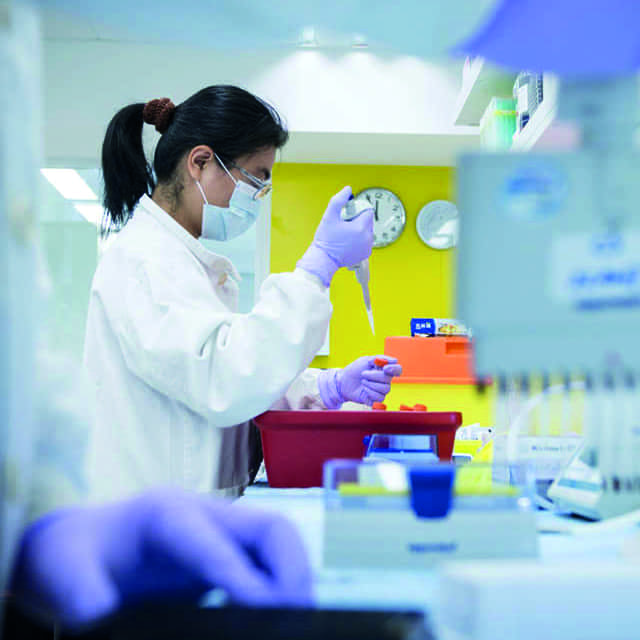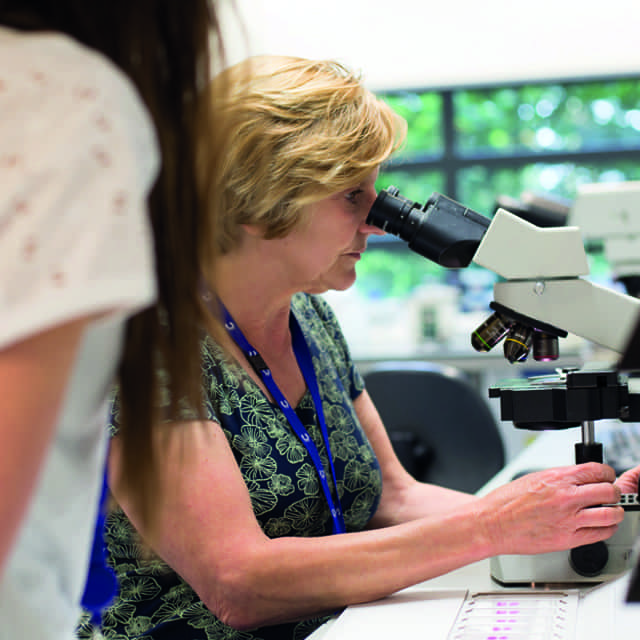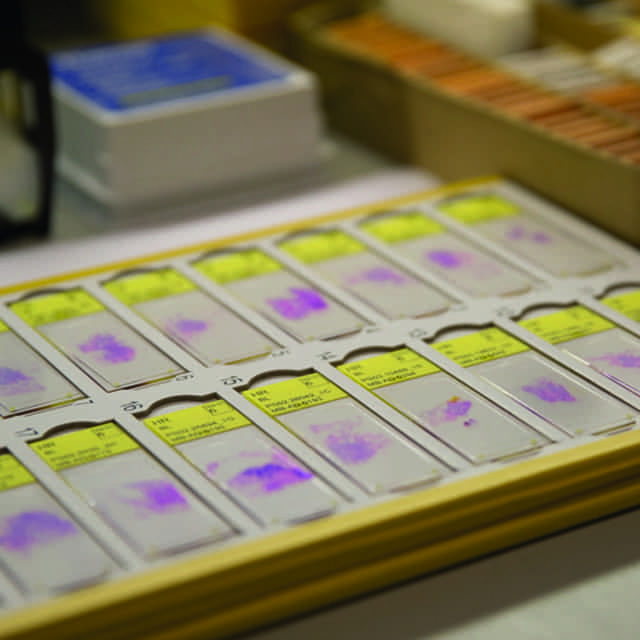
Discoveries to change the world



Over the past 100 years approximately 50 Nobel Prize winners in chemistry and physiology or medicine have been associated with Cambridge. From William Harvey understanding the circulation of blood in the 17th century to Crick and Watson’s DNA breakthrough in 1953 and Professor Sir John Gurdon’s Nobel Prize winning work on stem cells in 2012, Cambridge scientists are responsible for many of the breakthrough discoveries that underpin modern medicine.
Researchers based at CBC have a proven record in translating their discoveries into both commercial successes and healthcare benefits.
Humanised monoclonal and synthetic antibodies — Scientists from the MRC Laboratory of Molecular Biology (MRC LMB) were responsible for the development of humanised monoclonal and synthetic antibodies which now make up a third of all new drug treatments for a variety of diseases including cancer, arthritis and asthma. The licensing of the MRC LMB’s work on human antibodies to Cambridge Antibody Technology subsequently led to the development of Humira® which is consistently ranked as the world’s best selling drug.
X-ray crystallography — MRC LMB scientists pioneered the development of X-ray crystallography to determine protein structures. This technique has been widely adopted by pharmaceutical and biotech companies for structure-based drug design.
DNA Sequencing — Cambridge scientists Shankar Balasubramanian and David Klenerman were using fluorescently labelled nucleotides to observe the motion of a polymerase at the single molecule level as it synthesised DNA immobilised to a surface. The contributions of Cambridge scientists to the first draft of the human genome, and the University’s rich history of DNA research by Alexander Todd, James Watson, Francis Crick, and Fred Sanger, inspired Balasubramanian and Klenerman to theorise how this approach might be used to sequence DNA. A series of creative discussions in the lab and at a local pub during the summer of 1997 sparked ideas surrounding the use of clonal arrays and massively parallel sequencing of short reads using solid phase sequencing by reversible terminators (subsequently referred to as sequencing by synthesis technology, or SBS). This became the basis of a new DNA sequencing approach.
In some cases, researchers are involved in the development of bespoke technologies. For example, with colleagues from GE Healthcare, scientists at CRUK Cambridge Institute led by Professor Kevin Brindle developed nuclear spin hyperpolarisation – an imaging technique to overcome the limitation of Magnetic Resonance Imaging in studying metabolism. The first clinical hyperpolariser in Europe was installed at Cambridge University Hospitals where it is currently being used in phase 1 trials to detect tumour treatment response.
Potential game-changers into the future
Diagnosing Barrett’s Oesophagus
A ‘pill on a string’ developed by researchers at CBC could help doctors detect oesophageal cancer at an early stage, helping them overcome the problem of wide variation between biopsies. The Cytosponge sits within a pill which, when swallowed, dissolves to reveal a sponge that scrapes off cells when withdrawn up the gullet. It allows doctors to collect cells from all along the gullet, whereas standard biopsies take individual point samples. The Cytosponge was trialled in patients at the NIHR Clinical Investigation Ward at the Cambridge Clinical Research Facility on the campus.
Gene Therapy
Quethera is a gene therapy spin-out developing a treatment that could prevent the effects of glaucoma, the leading cause of irreversible blindness worldwide. It was established when Dr Peter Widdowson came across the research of Professor Keith Martin of the Clinical Neurosciences Group on the Campus. With Widdowson’s expertise in commercialisation and Martin’s medical background, they pooled their expertise to form Quethera. Support from Cambridge Enterprise and seed funding has enabled pre-clinical development of their therapy and the establishment of a strong intellectual property platform.
New discoveries are often made when curiosity, serendipity and world-leading science converge. A chance discovery by Dr Trevor Baglin in 2015 could prove to be a ‘one in a billion’ medical breakthrough. Dr Baglin was fighting to save the life of a woman admitted to Addenbrooke’s Hospital with potentially fatal head injuries and symptoms consistent with severe haemophilia. To the medic’s amazement the bleeding stopped and he observed that the phenomenon was down to an antibody in the patient’s blood that caused “extraordinary anticoagulation in the absence of bleeding” – preventing lethal clotting. He called in colleague Professor Huntington at the Cambridge Institute for Medical Research, a world leader in the field, to design a synthetic version of the antibody.

